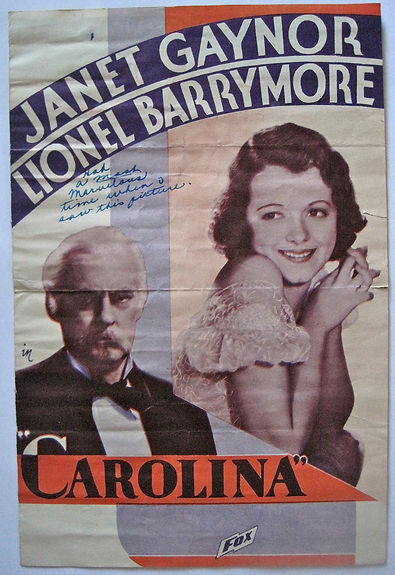
Dating, Dancing, and Riding in Cars
A Scrapbook Archive of Teen Culture in the 1930s
exhibit f.
movie program


Going to the Movies
In the early-to-mid 1930s going to the movies was a rarity for the average American. Movie attendance dropped dramatically in the first few years of the Depression, despite its tremendous popularity in the previous decade. By 1932 nearly all major theaters and production companies were in the black (Sklar 161). Around the mid-1930s, however, attendance started to pick up as movie houses began to offer discounted tickets and added incentives such as double and triple features and even dinnerware sets as gifts for frequent patrons (Price Davis 199).
In 1934 Disney spent nearly $2 million to produce the first feature-length cartoon, Snow White, which was wildly popular and broke all previous movie attendance records (Price Davis). It was also around this time that motion picture companies started to produce films aimed directly at teenagers. James Callan calls these films “growing up” stories because they featured teenage characters dealing with typical teen issues like friendship, school, and dating (70).
Since most Americans did not have the funds to attend movies during the Depression — tickets usually cost around $.25 in North Carolina (Price Davis) — Jane would have been quite privileged to see Carolina in 1934. Since Jane collected only one other film program in her scrapbook (Top Hat, 1935) and did not write about movies in her scrapbook notes, it is likely that she rarely went to the theater. Seeing Carolina, then, would have been a special treat.
Carolina is a 1934 romantic drama staring Janet Gaynor, Lionel Barrymore, and Robert Young. (Shirley Temple also had a small role.) In the film, a young woman travels to a run-down southern plantation to collect her deceased father’s belongings. While there, she meets the plantation owner, who wants to restore the plantation to its pre-civil war glory but is hindered by his addiction to alcohol. The young woman meets the plantation owner’s son and falls in love with him. The young lovers help repair the plantation and eventually get married.
front cover of program
inside of program